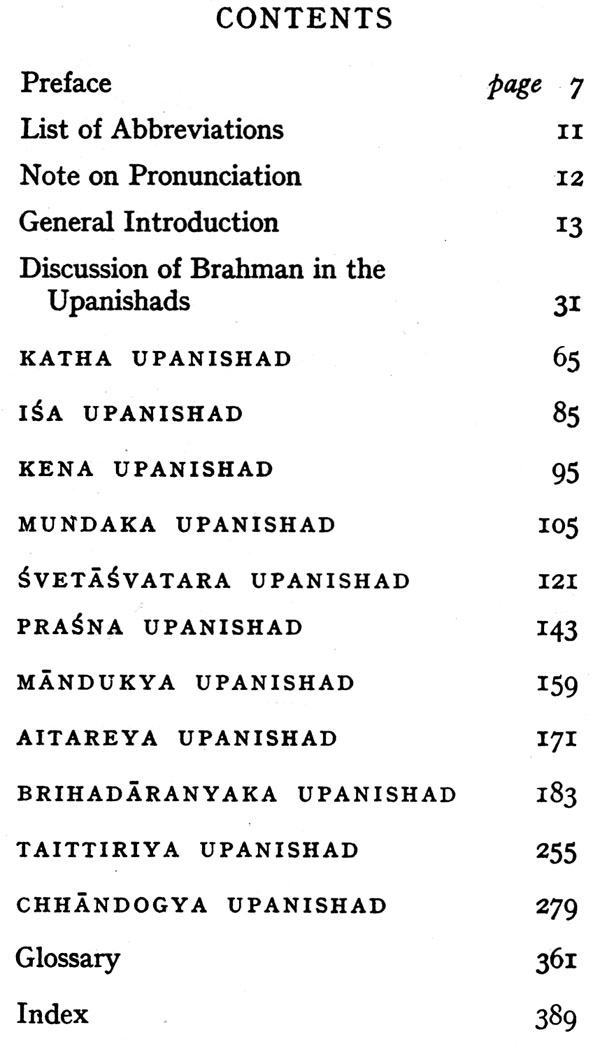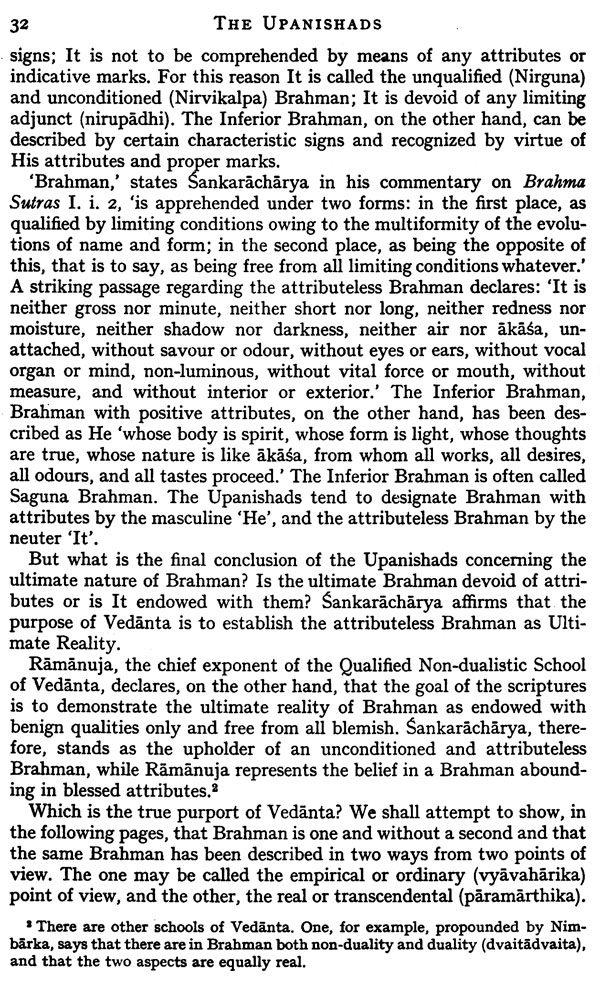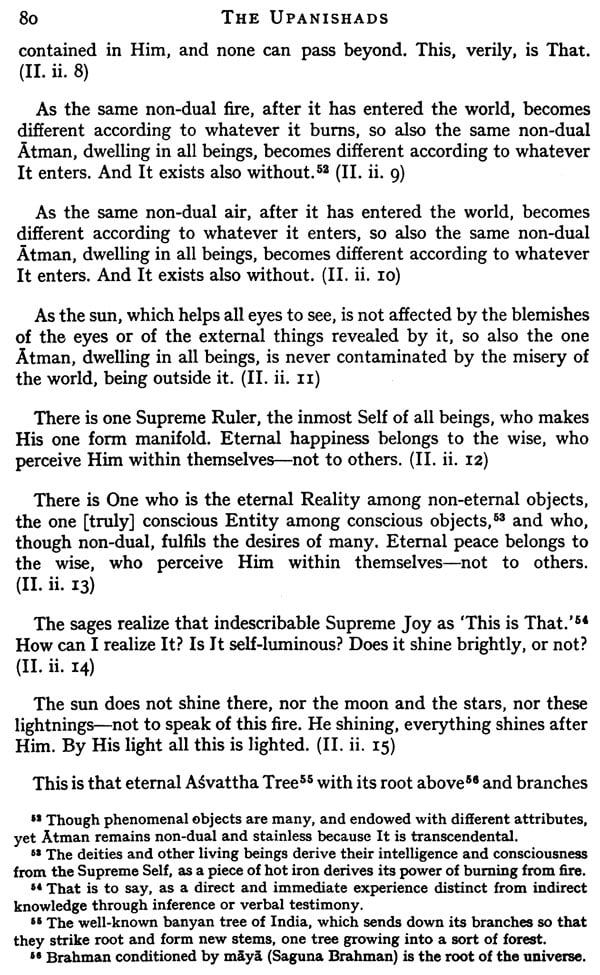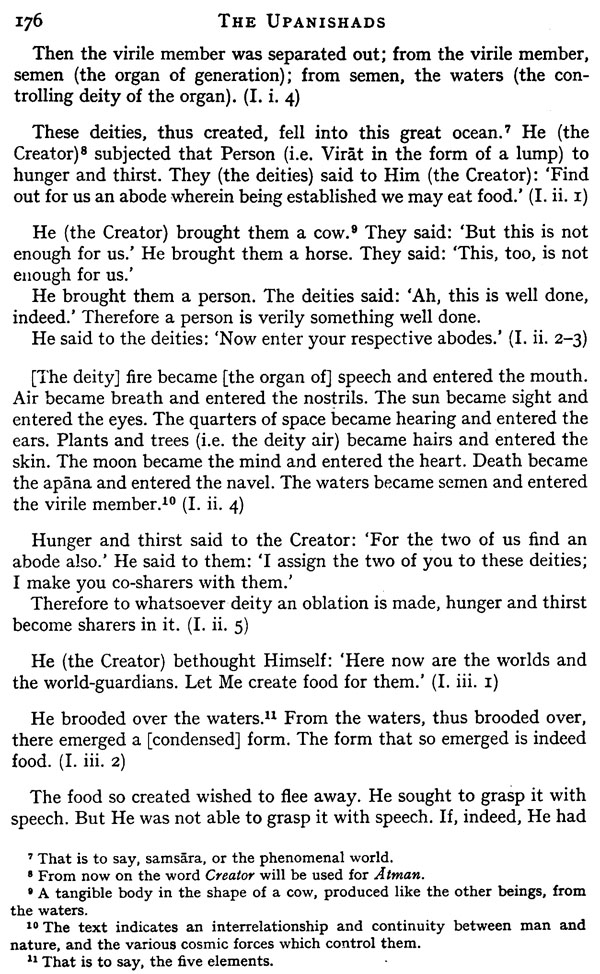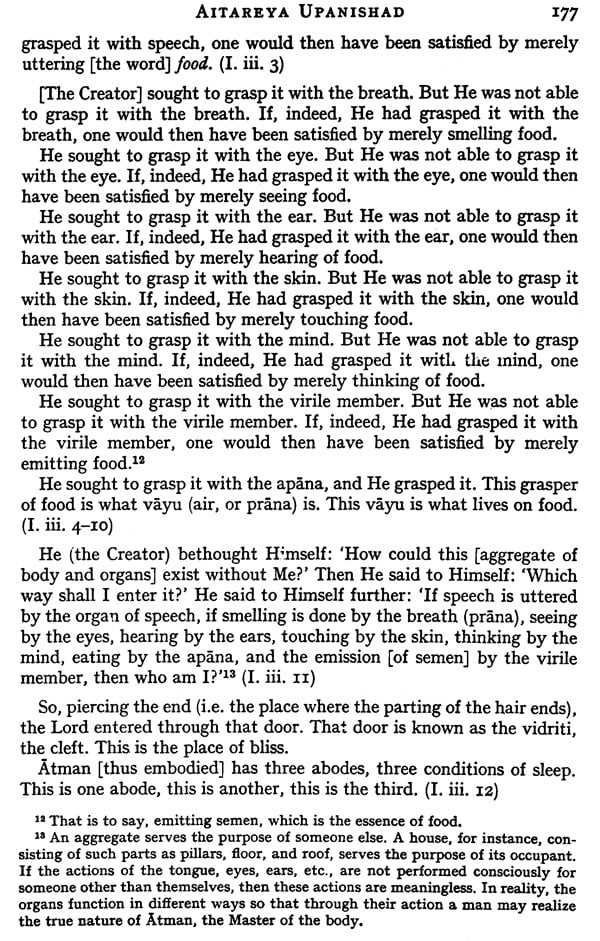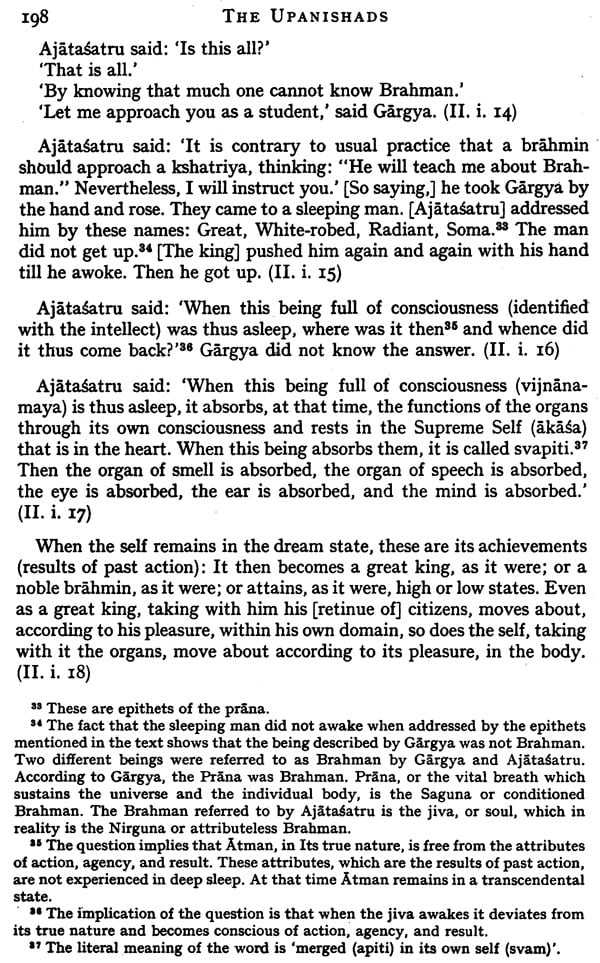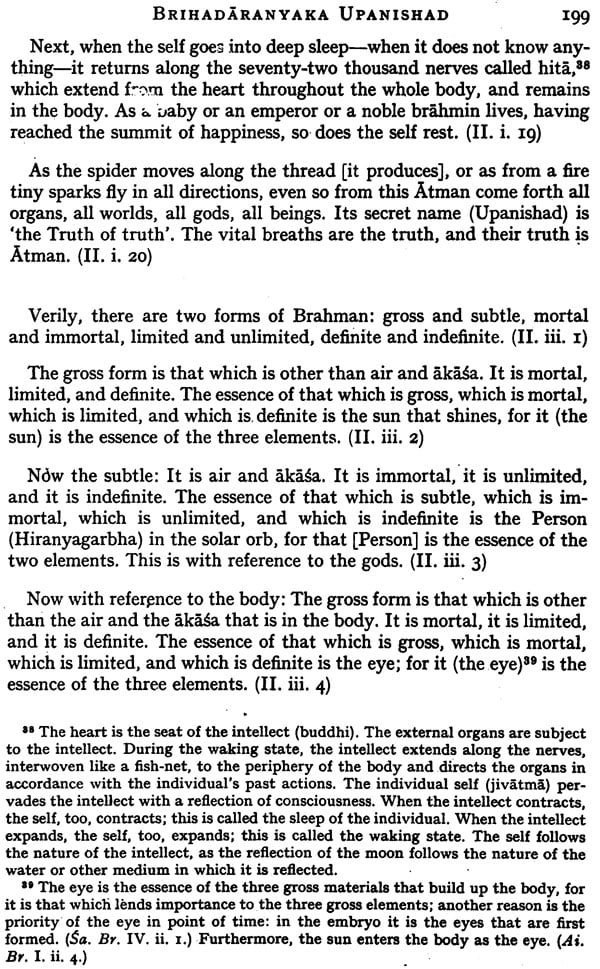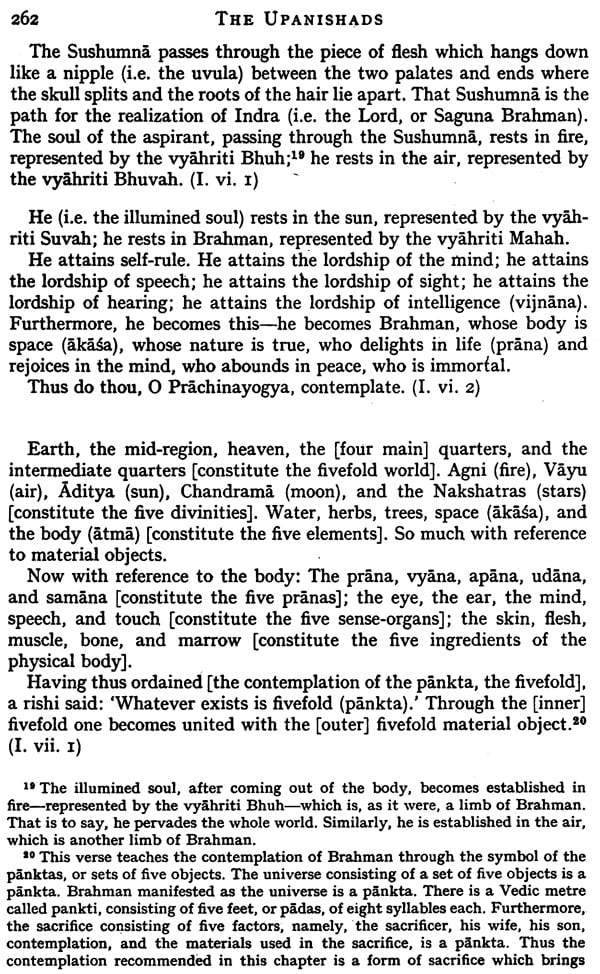
The Upanishads
Book Specification
| Item Code: | NAU779 |
| Author: | Swami Nikhilananda |
| Publisher: | ADVAITA ASHRAM KOLKATA |
| Language: | English |
| Edition: | 2012 |
| ISBN: | 9788175053007 |
| Pages: | 192 |
| Cover: | HARDCOVER |
| Other Details | 8.50 X 5.50 inch |
| Weight | 520 gm |
Book Description
The Upanishads form the concluding portion and contain the essence of the Vedas, which are the Scriptures of the Hindu faith. They record the direct and immediate spiritual experience of the rishis, the seers of truth, and have been passed down orally through a succession of illumined teachers. They treat of the origin and destiny of the soul, the nature of the universe, and the nature of ultimate reality. What are often presented as theological dogmas are in this new translation considered living experiences available to all. The divinity of the soul, the oneness of humanity, and the indivisibility of the Godhead are discussed not as articles of faith, but as the truths of spiritual experiences. Schopenhauer once said: 'The Upanishads are the most rewarding and elevating reading possible in the world: they have been the solace of my life and will be that of my death.
Swami Nikhilananda was born in a small Indian village in 1895 and was ordained a monk of the Ramakrishna Order in 1924. After spending several years in the Advaita Ashrama, Mayavati, Himalayas, during which time he made a study of Hinduism and other systems of philosophy and religion, he was sent to America in 1931. He founded the Ramakrishna-Vivekananda Center in 1933 and was its spiritual leader until his passing away in 1973. Among his important translations are The Gospel of Sri Ramakrishna, The Upanishads, The Bhagavad Gita, and Self-Knowledge.
This volume of the Upanishads, containing Katha, Isa, Kena, Mundaka, svetasbatara, Prasna, Mandukya, Aitareya, Brihadaran-yaka, Taittiriya, and Chhandogya, is a presentation in abridged form of the four volumes of the Upanishads translated by myself and published by Harper & Brothers in New York and Phoenix House in London. These are the major Upanishads and they are regarded as the basis of the Vedanta philosophy, the outstanding contribution of the Hindu thinkers to the philosophical thought of the world.
In the arrangement of these Upanishads no chronology has been attempted. Modern scholars, from the standpoint of linguistics and of the evolution of religious and philosophical thought, have formulated several chronologies. But Hindu tradition regards the whole of the Vedas, with their rituals and philosophies, as a simultaneous revelation of certain truths which cannot be perceived by the sense-organs or arrived at through reasoning based upon sense data. These truths are conceived as being eternal, without beginning or end, and not creations of the human intellect.
In this volume I have omitted certain portions of the text of the four original volumes: those dealing mostly with upasana, or ritualistic meditation, as described especially in the Brahmana part of the Vedas, which would appear recondite to modern readers. The place of upasana in Vedic thought and its usefulness in the practice of spiritual disciplines have been discussed in the introduction to the Chhandogya Upanishad in the present volume. The bulk of the original volumes has been further reduced by condensing the notes and explanations, enough of which, however, have been kept to enable a perceptive reader to grasp the meaning of the text. For a deeper comprehension the regular edition will be useful. The number given in parentheses at the end of each verse is the number of the verse in the original Upanishad. The quotations in the two introductory chapters, if not specified otherwise, are from the Upanishads. The exact references are given in the regular four-volume edition of the Upanishads translated by the present author.
A comprehensive glossary deals with the Sanskrit terms to be found in the volume. I have prepared this glossary as a sort of Upanishadic dictionary and attempted to give various meanings of the words, often italicizing those meanings especially pertinent to the Upanishadic texts. In preparing it I have profitably consulted the Sanskrit-English dictionary of Monier Williams. Here I take the opportunity to express my profound gratitude to Dr Herbert W. Schneider, former Professor of Philosophy in Columbia University, who urged me to prepare this abridged edition and who has kindly suggested important changes in the two introductory chapters.
This abridged edition of the Upanishads is expected to be especially useful for students in colleges, universities, and theological seminaries where the Upanishads are studied in connexion with comparative religion or world literature. It is unfortunate that the importance of the Upanishads as world philosophy has not yet been recognized by philosophers in the West. For those already familiar with the Upanishads, who wish to have the best parts of the texts readily available, the book will be convenient to carry about.
The distinctive feature of my translation, apart from whatever literary merit it may possess, is that it explains the texts in the light of the commentary of Sri Sankaracharya (AD 788-820), whose non-dualistic interpretation of the truths of the Upanishads is accepted by the majority of Indian students of the Upanishads as giving coherent and satisfactory meaning to many difficult passages. As I stated in the preface to the first volume of The Upanishads, the vast Vedic literature of the early Inclo-Aryans is like a trackless tropical forest, full of lush underbrush, weeds, thorns, and stately trees. Travellers in it often become dismayed, bewildered, and lost; yet if they courageously and patiently push on, they are rewarded by the discovery of blossoms of rare beauty and fragrance. The present volume contains these blossoms.
**Contents and Sample Pages**
